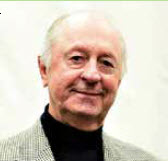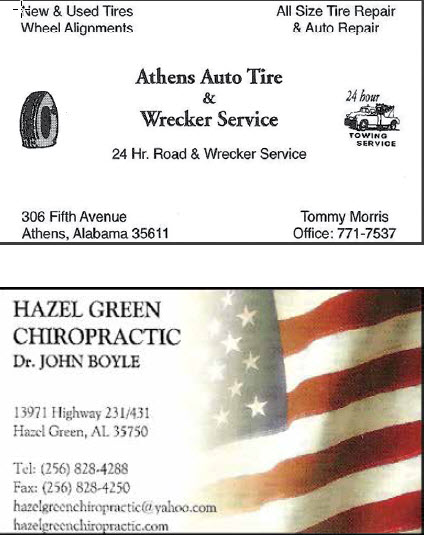Where Hell Was Green, Part 1
 By: Jerry Barksdale
By: Jerry Barksdale

September, 1968. Somewhere over the South China Sea.
1st Lieutenant Joseph “Joe” Rogers, born in tiny Thomasville, Alabama and reared in nearby Demopolis was finally heading to Vietnam. By Christmas over 31,000 of his fellow Americans would be dead and the number was certain to rise.
At the moment, Rogers was more concerned with arriving alive than returning alive. The “Anxiety Flight” as the soldiers called it, was an old 727 rusty bucket owned by Northwest under contract to fly troops to Cam Rahn Bay.
“All of the rivets rattled. It shook, rattled and rolled,” says Rogers, a resident of Limestone County since 1990. “We thought the wings were coming off. Not only that, they put the ugliest stewardess they could find on the plane. And the only thing we had to drink was milk, water, and soda.”
Perhaps the miserable 13-hour flight from Seattle to Tokyo and on to Vietnam was a harbinger of events to come. He hoped not. The plane rattled and droned onward giving him time to ponder why he was onboard. He had lettered in football, basketball, and track while working part time before graduating at Demopolis High School in 1962.
The next two years, he worked and attended Livingston State College and the University of South Alabama. He dropped out a semester and Uncle Sam took notice. He was drafted on November 3, 1966. Following basic training at Ft. Benning, Georgia, he completed Advanced Infantry Training at Ft. McClellan, Alabama.
That experience convinced him there had to be a better way of serving his country. “I got tired of crawling on my belly to the mess hall and doing push-ups at the drop of a hat,” he says. Fate intervened. One day a crusty old Sergeant walked out of the orderly room and bellowed at the young soldiers “All right you pukes, who wants to go to OCS?” That’s Officer’s Candidate School. “I was the first one to raise my hand,” says Rogers, who was accepted and sent to Ft. Sill, Oklahoma for a grinding six-month course.
“It was tedious. Everywhere we went we had to run; constant harassment and dropping for pushups. There was Ranger Patrol in the barracks at night which was making us get down on our hands and knees with a towel and clean the floor.” He also learned about leadership, customs, traditions and even how to set a proper place at the table – things an officer needed to know.
After receiving his “butter bars” and commissioned Second Lieutenant, he was assigned to a field artillery battery as Executive Officer in support of units that were going to Vietnam. “We stayed on the firing range day and night. No vacations, no July 4th, no holiday,” says Rogers. A year passed.
“One day I was told I was going to a unit in Vietnam where I would need a top secret clearance.” The background check took 6 months and cost the government a wad of money. It included interviews with his high school teachers and combing through public records where they discovered he had paid a trespassing fine as a boy after shooting a deer on government land. “It crossed a fence and died on private property. That became a big thing, and I had to explain what happened,” says Rogers, who eventually received top secret clearance.
“But why top secret?” he wondered. It had to be something important. At least he wouldn’t be a grunt crawling through the stinking jungles, swatting mosquitoes and dodging bullets. Good news arrived. He would proceed to Vietnam for assignment to 2nd Field Force, headquartered in Saigon, a somewhat cushy job, with high Command.
The plane dive bombed into Cam Rahn Bay to avoid small arms fire. Rogers stepped off into a steaming oven of 105 degrees. Quarters were assigned. A big burly Sergeant in charge of arrivals said: “Okay, all you officers come back tomorrow morning at 7:00. I’ll have your orders.”
No worry. Rogers had his orders safely stowed away in his duffle bag. “I already have my orders for 2nd Field Force,” he told the Sergeant. Early next morning, he awoke to Vietnamese maids cleaning the barracks and paying no attention to half naked soldiers. He dressed and fell in formation. Shortly, the burly Sergeant appeared. “Okay, I got orders for you guys,” he said and started calling names.
He called off two names to go to 2nd Field Force, but Rogers wasn’t one of them. “Something’s not right here,” Rogers said to the Sergeant. Then the Sergeant called Rogers name for assignment to the 1st Air Cavalry Division. “What? This can’t be!” Rogers handed his orders to the Sergeant who tore them in half and threw them in a small fire. “How can you do that?” asked Rogers. “The Government has spent all this money and it took six months to get my top secret clearance and the first thing you do is burn the orders.”
“Sir, my orders are to backfill the 1st Air Cavalry Division and that’s exactly what I’m doing.” The 1st Air Cavalry had suffered heavy casualties during the recent TET Offensive and replacements were needed. Two days later, Rogers was helicoptered to Ankhe where the famed 1st Air Cavalry Division was headquartered. The Division, organized in 1921, was known as the “First Team.” Their predecessors had fought Indians on horseback. They were the first Americans to enter Manilla during World War II and the first to enter Japan. During the Korean War they were the first division to enter Pyongyang, North Korea, and they were the first Army division to be deployed in Vietnam. Instead of horses, now they rode helicopters.
He spent 8 to 10 days in Ankhe polishing up on combat and survival skills and was issued a new uniform, boots and an M16 rifle. He knew he was heading to combat. Wearing his spanking new green uniform, he loaded into the belly of a C123 transport plane, found a seat on the floor and lifted off to LZ Nancy, a firebase located near the DMZ (Demilitarized Zone separating North and South Vietnam). The fire base was studded with heavy artillery and served as Battalion Headquarters. It was called “Palace Guard” by the men who rotated back there after days and sometimes weeks in the jungle on search and destroy operations. When patrolling grunts located the enemy, they called LZ Nancy’s Fire Direction Center for artillery support. Shortly the big guns were belching steel.
Rogers was assigned to 1s Battalion 77 Field Artillery as Battalion Ammunition Officer. His job was to keep several batteries supplied with ammo. The ammunition depot was located 22 miles north of LZ Nancy near the DMZ where his crew was located. Each day he went there by jeep, carrying mail, where ammo was loaded on “slingouts” and helicoptered to firebases.
“Those guys were located away from their base and somewhat on their own,” says Rogers. “They were responsible for taking care of themselves.” As always, necessity is the motherhood of invention. “They had a ¾ ton truck to haul ammo, but it hauled only one half of what was needed at any one time,” says Rogers. The largest truck authorized was a 2 ½ ton called a “deuce-‘n- half.” He asked his crew about getting a larger truck. “Sir, the only thing we see around here are five ton trucks,” they replied. “Well, said Rogers. “If you can’t find a “deuce-‘n-half” and since 1st Cav doesn’t authorize a five ton truck, we’ll have to do with what we got.”
Several days later, Rogers was at LZ Nancy when he saw a five-ton truck approaching in a cloud of dust. It was his ammo team. They had driven down to get mail, fresh uniforms and eat meals before returning the following day. “Where in the world did y’all get that five ton truck?” asked Rogers. “Sir, it’s a long story,” replied the Sergeant. “You see, there was this SeeBee up there. One night he got drunk at the NCO club and was driving this five ton truck. I found him in a ditch – he had run off in a ditch.”
“That’s just half the story. What’s the rest?” demanded Rogers. “This guy was passed out. We took him to the hospital and just took the truck.”
About thirty minutes later, Rogers was summoned to Battalion Headquarters. The Colonel had seen the five ton truck also and knew it wasn’t authorized. Rogers explained what happened and the Colonel relented, but with a stern warning. “Don’t ever – ever let this truck on this location again. I never want to see that truck again.” The truck gave good service and the crew was happy. “Over there, if you needed anything, you had to trade for it, scrounge for it, or do some midnight requisitioning,” says Rogers.
Most nights at LZ Nancy were spent playing poker in hooches, but the biggest entertainment was shooting rats. “They were big as raccoons, “ says Rogers. “If there was a lot of shooting going on, you knew there was a problem going on at the fence, but if one shot, it was the rat patrol.” He was just settling into his new job when he received orders to go to the field as an F.O. (Artillery Forward Observer). That meant he would be in the jungle on search and destroy operations where there was great danger. “When am I going?” he asked. “Tomorrow morning.”
To Be Continued…
